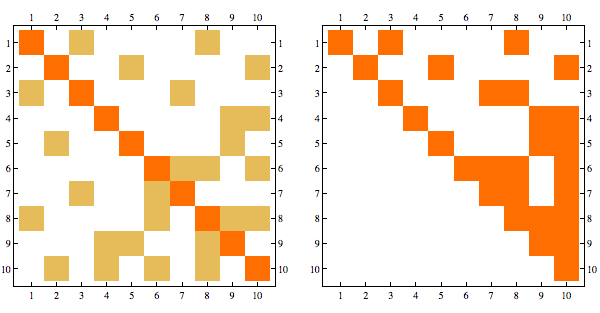
The sparsity pattern in the Cholesky factorization corresponds to the adjacency matrix of the graph triangulated using canonical ordering. This triangulation involves adding so called "fill" edges and can be visualized below
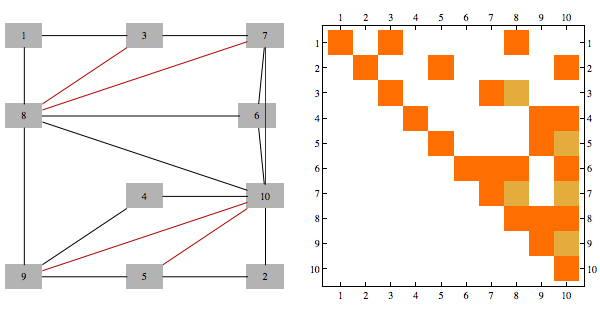
A matrix whose rows/columns can be symmetrically permuted to give Cholesky factorization with no extra fill cells is known as a "chordal" matrix, and a graph corresponding to that sparsity structure is known as chordal graph. Rearrangement of indices that produces factorization with no extra fill is known as "perfect elimination ordering".
Consider the following matrix and its Cholesky decomposition
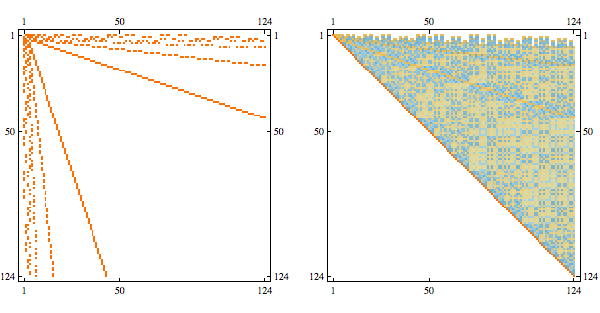
This matrix is chordal, and perfect elimination ordering corresponds to reversing the order of rows/columns, here's the Cholesky decomposition with order reversed
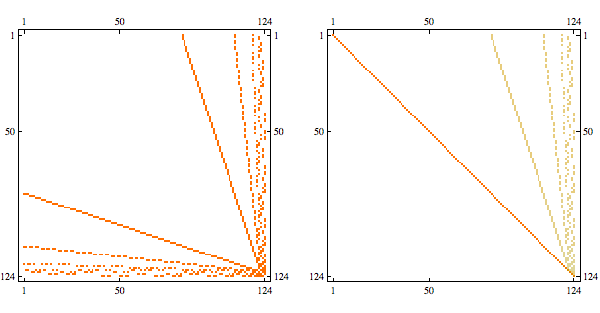
When the matrix is not chordal, perfect elimination ordering is not possible, but you could still try to rearrange the indices to make result of symmetric Gaussian elimination as sparse as possible, this is known as min fill ordering. Greedy min-fill search will find perfect elimination ordering if one exists.
To arrange symmetric matrix A to make its Cholesky factorization as sparse as possible using greedy min fill search, do the following
Needs{"Bulatov`chordal`"];
order = getMinFillOrder[AdjacencyGraph@Unitize@A];
CholeskyDecomposition[A[[Reverse@order, Reverse@order]]]Here's an example of a structured sparse matrix and its Cholesky decomposition
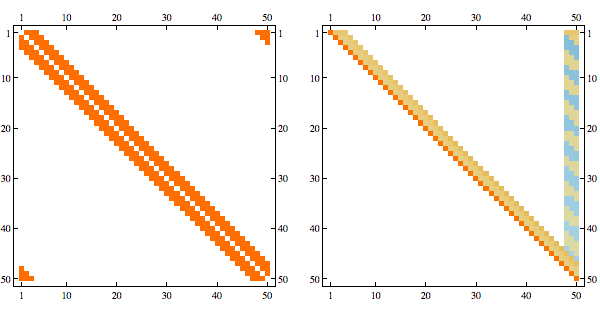
Here's the result after randomly permuting indices
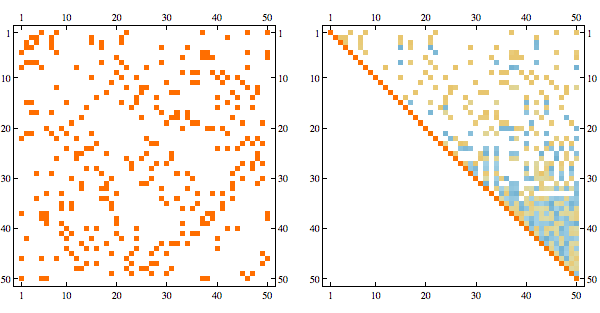
Using greedy minfill ordering we can recover some of the original structure
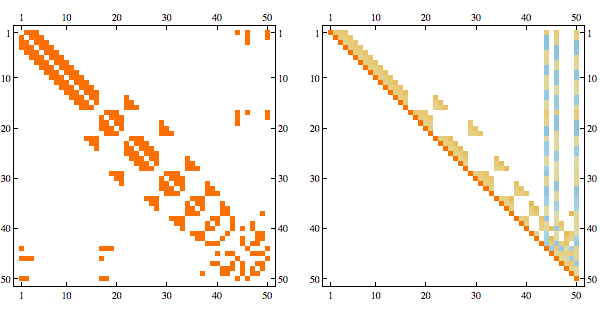
Here's a more complex example with non-linear structure
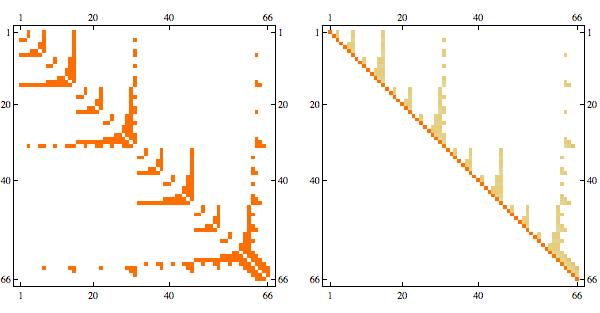
it's a matrix with sparsity pattern corresponding to the following graph
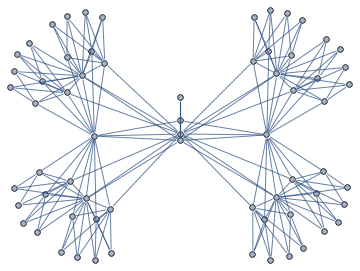
Randomly permuting indices we get the following
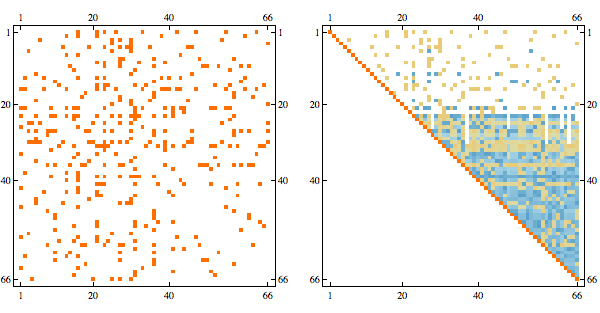
And here's the result in minfill order
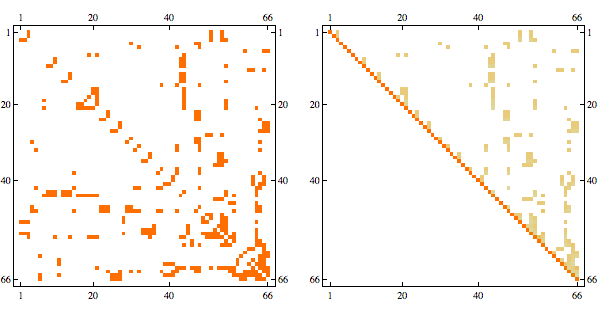

Notebook
Packages
Thank you for sharing with us.
ReplyDeleteMathematica